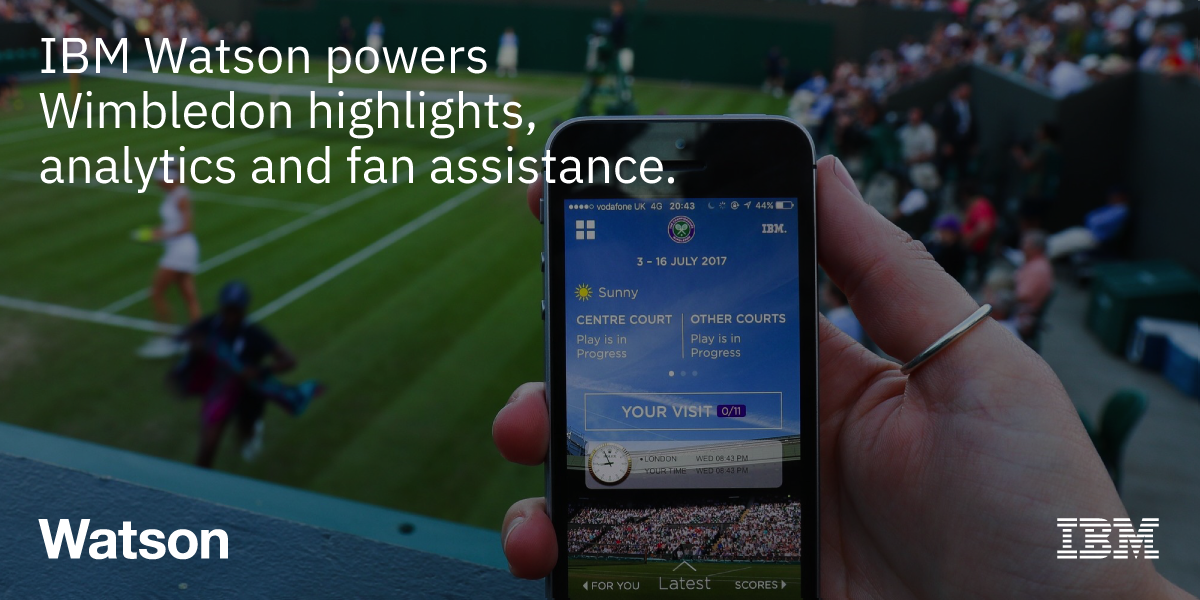We’ve covered big data and analytics in some of our previous posts, and in this post, we focus solely on IBM Watson big data. We will discuss where it started, its evolution and growth, and how IBM Watson is powering big data and analytics today. We will also explore some industry use cases. By the end of this post, you will have a greater understanding and appreciation for IBM Watson and big data analytics.
Download our summary sheet to learn more about the future of IBM Watson.
Cognitive Computing & IBM Watson
Before IBM Watson, an IBM Research team worked on a project called Deep Blue. Deep Blue was programmed to sift and sort through up to 200 million possible chess positions per second. In 1997, Deep Blue made international headlines by using high-powered computing to win a chess match. Later, the architecture behind Deep Blue gave developers insight into ways they could use this type of processing for predictive modeling in the world of finance, healthcare, and business practices.
Deep Blue placed IBM at the forefront of the cognitive computing technology era, leading to IBM Watson.
Watson, The First Iteration
In early 2011, IBM caught international attention again as IBM Watson beat two of the all-time most successful human players on Jeopardy! without an internet connection. It only knew what it had amassed through years of persistent interaction and learning from a large set of unstructured knowledge. Using machine learning, statistical analysis, and natural language processing to find and understand the clues in the questions, IBM Watson then compared possible answers, by ranking its confidence in their accuracy, and responded – all in about three seconds.
Source: IBM
Applications of IBM Big Data Analytics
Advancements in the Watson ecosystem have evolved at a rapid pace since this first iteration. What follows are some examples and case studies of how IBM Watson is powering big data and predictive analytics with long-term value.
Healthcare
The healthcare sector generates petabytes of data, information from Electronic Patient Healthcare Records (EPHR), research, trials and medical journals is often unstructured and due to the sheer volume of it, can’t be processed manually by humans.
Because of this, potentially valuable insights are being lost which could have lifesaving implications such as helping to diagnose medical conditions or identify patients that will respond better to some treatments more than others.
Cancer patients
According to IBM, Watson is adding value to Oncology and is being used to suggest tailored treatment plans for patients based on their unique medical records. Not everyone benefits or responds to treatment in the same way, but with IBM Watson Data and Analytics, healthcare professionals can crunch large volumes of data to identify treatments that have the highest probability of success.
Download our summary sheet to learn more about the future of IBM Watson.
Diabetes
387 million people in the world live with diabetes, and according to Hooman Hakami, Executive Vice President and Group President of Medtronic Diabetes:
“The number of people isn’t slowing down, the cost isn’t slowing down. We need to do something different.”
To address this, IBM, in conjunction with Medtronic, worked together to produce a Cognitive Application that can help with the prevention, identification, and management of diabetes.
The Medtronic and Watson application dubbed Watson Health was designed to help patients manage their condition daily. One of the ways in which it’s able to do this is be performing a retrospective analysis of a patient’s insulin levels, continuous glucose monitors, and nutritional data.
The application can help patients understand how their everyday behavior is affecting fluctuations in glucose levels in real-time. The hope is that patients will be able to pinpoint lifestyle choices and their effects and adjust or make healthier decisions.
Finance
In 2012, Citi partnered with IBM to explore the use of Watson technology with consumer banking solutions. After developing cognitive technologies for customer insight, IBM went on to develop technology to help finance firms manage regulatory and compliance controls. Today, IBM Watson Financial Services powers services in the wealth management industry, insurance, and financial risk management solutions.
Source ZDNet
Marketing
With a history of data analysis and predictive modeling, it’s no surprise that the marketing industry is a growing marketplace for IBM Watson. In 2016, SugarCRM partnered with IBM to help businesses across the automotive, insurance, hospitality, retail, industrial, government, and banking industry solve CRM problems. In 2017, Salesforce announced a global strategic partnership to power Salesforce Einstein.
Wimbledon Case Study
Back in 2016, powered by IBM Watson big data and analytics the Wimbledon editorial could monitor social channels and break new stories and mold the narrative to encourage new fans from other sports such as the F1 to visit its tennis-related platforms.
The results were impressive, a 24% increase in social media audience, an increase of 25% in terms of video views from 2015’s event (110 million video views).
View Habits and Attention
Internet user habits have changed dramatically in recent years, attention spans are shorter, and from a marketing perspective, it is often said that we live in an “attention economy.”
Watson allowed the Wimbledon team to capture the audience’s attention by allowing the team to continuously publish the right content in the right places at the right times.

Twitter Data
Twitter, the global social media platform is the platform of choice if you want to find out what’s happening now.
For the Wimbledon Team to create compelling content for social media audiences, it paid to keep an eye on the hot topics of the day. A task like this is impossible to achieve manually, but by leveraging Watson’s Natural Language Classifier, the team could “surface” key topics and phrases of the day.
Instead of using simple keyword filtering such as searching for a hashtag such as “#wimbledon,” Watson was trained using historical datasets to highlight messages that were relevant to the tournament.
To further enrich this data and gain additional insights, Watson’s Alchemy Language service was used to identify metadata from the text of relevant social media posts. Using this service allowed the team to identify things such as the players and matches being mentioned or the sentiment of the post (the underlying emotion of the message).
Signals
Throughout the tournament, over 17 million pieces of social media content were processed and aggregated. This information was displayed in real-time dashboards in the Cognitive-Social Command Centre interface.
[bctt tweet=”By identifying signals in the “noise,” the editorial team could then make better-informed decisions about how best to connect with the audience. #Wimbledon #CaseStudy #IBMWatson ” username=”GAPapps”]
You might think that 17 million posts sound like far too much content to process, but Watson was able to “surface” the most important topics and messages that were relevant to the Editorial Team. This gave the team insights as to which topics and stories had viewers and fans excited.
Summary
We’ve explored AI, machine learning and its effects on employment in detail on another blog post. While a platform like IBM Watson allows healthcare professionals to quickly analyze vast quantities of medical data whether it be in text, video or web format at incredible speeds, we don’t see clinicians and other healthcare professionals being replaced anytime soon. The same can be said for many other industries.
Platforms like IBM Watson will extend existing human capabilities by allowing professionals to derive actionable insights from data that was invisible prior to using AI and machine learning technology.
Here at Growth Acceleration Partners, we have extensive expertise in many verticals. Our Centers of Engineering Excellence (COEs) in Latin America focus on combining business acumen with top-notch expertise to help your business.
We can provide analytics services for your organization with resources in the following areas:
- data analytics
- data science
- information systems
- machine learning
- predictive modeling
- software development
- …and much more!
If you’d like to find out more, then visit our website here. Or if you’d prefer, why not arrange a call with us or send us an email?



